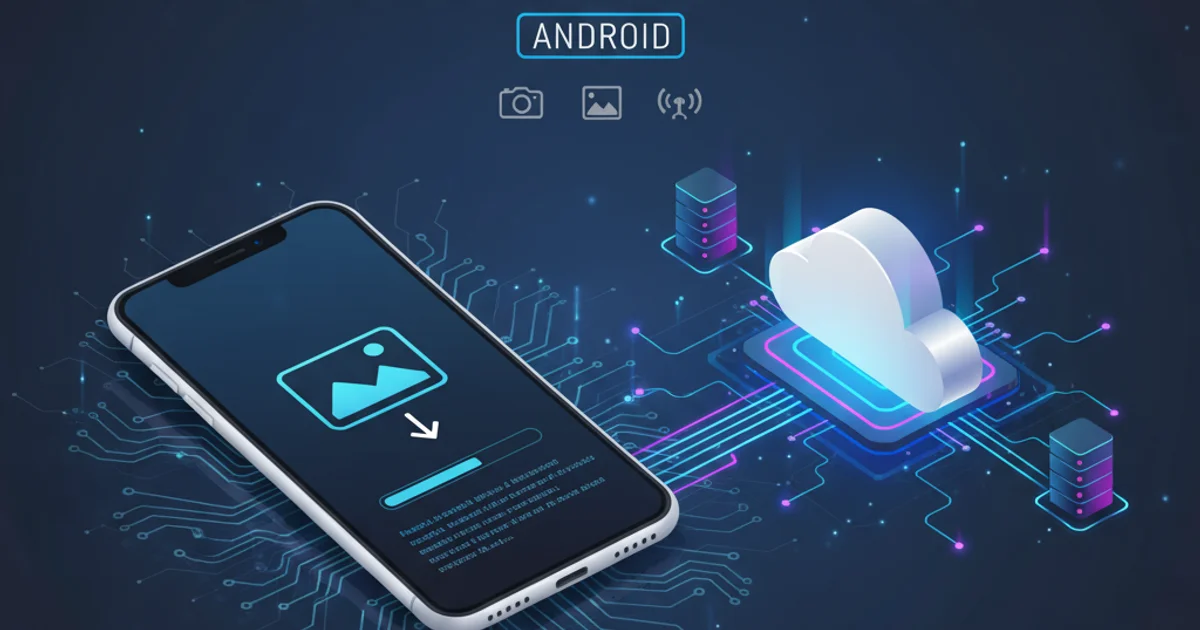Uploading Images to Server android
Categories:
Uploading Images to a Server from Android Applications

Learn how to implement robust image upload functionality in your Android applications using HTTP POST requests, handling various data formats and server responses.
Uploading images from an Android device to a remote server is a common requirement for many mobile applications, from social media platforms to e-commerce apps. This process involves capturing an image, preparing it for transmission, and sending it over the network using an HTTP POST request. This article will guide you through the essential steps and considerations for securely and efficiently uploading images, covering different data formats and best practices.
Understanding the Image Upload Workflow
Before diving into code, it's crucial to understand the typical workflow for image uploads. This involves several stages, from user interaction to server-side processing. A clear understanding of this flow helps in designing a resilient and user-friendly upload mechanism.
sequenceDiagram
actor User
participant AndroidApp as Android Application
participant Server as Remote Server
User->>AndroidApp: Select/Capture Image
AndroidApp->>AndroidApp: Convert Image to Bytes/Base64
AndroidApp->>AndroidApp: Create HTTP POST Request
AndroidApp->>Server: Send Image Data (HTTP POST)
Server->>Server: Validate & Store Image
Server-->>AndroidApp: Send Response (Success/Failure)
AndroidApp-->>User: Display Upload StatusSequence diagram illustrating the image upload workflow from an Android application to a server.
Preparing the Image for Upload
Once an image is selected or captured, it needs to be prepared for transmission. Common methods include converting the image to a byte array or encoding it as a Base64 string. Each method has its advantages and disadvantages regarding payload size, server-side parsing, and ease of implementation.
import android.graphics.Bitmap;
import android.graphics.BitmapFactory;
import java.io.ByteArrayOutputStream;
import android.util.Base64;
public class ImageUtils {
public static byte[] bitmapToByteArray(Bitmap bitmap, Bitmap.CompressFormat format, int quality) {
ByteArrayOutputStream stream = new ByteArrayOutputStream();
bitmap.compress(format, quality, stream);
return stream.toByteArray();
}
public static String bitmapToBase64(Bitmap bitmap, Bitmap.CompressFormat format, int quality) {
byte[] byteArray = bitmapToByteArray(bitmap, format, quality);
return Base64.encodeToString(byteArray, Base64.DEFAULT);
}
public static Bitmap base64ToBitmap(String base64String) {
byte[] decodedBytes = Base64.decode(base64String, Base64.DEFAULT);
return BitmapFactory.decodeByteArray(decodedBytes, 0, decodedBytes.length);
}
}
Sending the Image via HTTP POST
The core of the upload process involves sending the prepared image data to the server using an HTTP POST request. Libraries like OkHttp or Volley simplify network operations in Android. We'll focus on using OkHttp for its modern API and efficiency.
import okhttp3.MediaType;
import okhttp3.MultipartBody;
import okhttp3.OkHttpClient;
import okhttp3.Request;
import okhttp3.RequestBody;
import okhttp3.Response;
import java.io.IOException;
public class ImageUploader {
private static final String UPLOAD_URL = "https://your-server.com/upload";
private final OkHttpClient client = new OkHttpClient();
public void uploadImage(byte[] imageData, String filename, String mimeType) {
RequestBody requestBody = new MultipartBody.Builder()
.setType(MultipartBody.FORM)
.addFormDataPart("file", filename, RequestBody.create(MediaType.parse(mimeType), imageData))
.addFormDataPart("description", "User uploaded image")
.build();
Request request = new Request.Builder()
.url(UPLOAD_URL)
.post(requestBody)
.build();
try (Response response = client.newCall(request).execute()) {
if (!response.isSuccessful()) throw new IOException("Unexpected code " + response);
System.out.println(response.body().string());
} catch (IOException e) {
e.printStackTrace();
}
}
// Example usage (call this from a background thread)
public void exampleUpload(Bitmap bitmap) {
byte[] imageBytes = ImageUtils.bitmapToByteArray(bitmap, Bitmap.CompressFormat.JPEG, 80);
uploadImage(imageBytes, "my_image.jpg", "image/jpeg");
}
}
multipart/form-data requests.